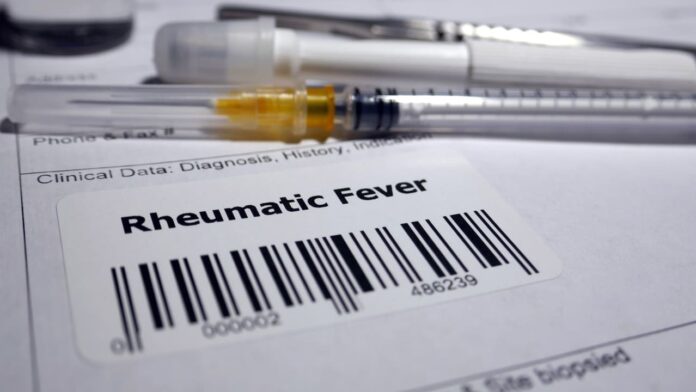Arguably the biggest challenge facing New Zealand’s 20 district health boards (DHB)s is that the biggest driver of health demand and therefore financial costs is external to the health system. This places DHBs in the unenviable position of being unable to do much more than being an ambulance at the bottom of the cliff.
The driver is what are known as social determinants of health. They include housing access and quality, educational opportunities, environmental factors, occupation, income level, food insecurity, racial discrimination and gender inequity. For good reason former Prime Minister Helen Clark has noted that her work as a housing minister did more for the health of New Zealanders than her work as a health minister.
The effects of these social determinants of health are highlighted by a well-written article by Stuff health journalist Bridie Witton (10 March) on a sharp increase in rheumatic fever in the Wellington region: https://www.stuff.co.nz/
A disease that shouldn’t be here
Rheumatic fever is a serious but preventable disease that can result from inadequately treated strep throat or scarlet fever. It causes inflammation, especially of the heart, blood vessels and joints. Symptoms include fever and painful, tender joints. Treatment involves medication, sometimes for life. It mainly affects Māori and Pasifika children and young people (aged 4 to 19 years), especially if they have other family members who have had rheumatic fever. Around 130 people die of the fever each year of whom 95% are Māori and Pasifika.
This rheumatic fever increase should be seen in the context of a disease that has been almost eliminated from developed countries like New Zealand. It is attributed to one of the main social determinants of health – substandard housing.
In the Wellington region 14 Māori and Pasifika children and young people in Porirua and Lower Hutt had the fever in 2020 compared with 8 in 2019. Normally the number of children hospitalised with acute rheumatic was 1 or 2. In 2020 it was 9. Nationwide, incidents of the disease increased by 25%.
Devastating disgrace
For good reason Dr Nikki Turner, Immunisation Advisory Centre Director (Auckland University) of Auckland considers the sharp increase to be a “worrying sign” because of the close alignment with poverty and particularly poor housing worsened by the economic difficulties resulting from the Covid-19 pandemic.
Dr Turner’s worry was expressed more vividly by Dr Bryan Betty, a Porirua GP who is also Medical Director of the Royal College of General Practitioners. Describing it as a disgrace he said that “It is devastating for children and young adults, their whanau and society. We shouldn’t have rheumatic fever in this country.”
Macro government response needed
Ultimately joined up government policies that address the social determinants of health from housing to income to gender and racial inequities will be most decisive. The Government’s healthy homes standards helps by regulating standards in rental homes for insulation, heating and ventilation of bathrooms and kitchens.
But in terms of the magnitude of the problem the effectiveness of regulating rental housing standards is limited in isolation. It needs to be part of a comprehensive strategy across the spectrum of social determinants. Potentially the Government’s wellbeing focus provides a useful framework to facilitate such a strategy.
Implementing the recommended benefit increases from the Government’s welfare advisory group should be a major part of this strategy. Then more people could afford to live in rented homes with regulated standards.
Health system response
Within the health system there is more that DHBs could do with better primary care funding to ensure more integrated services in high needs areas with low-income families. There is merit in considering direct DHB provision of primary care in these areas where there is insufficient GP and other health professional capacity as the Counties Manukau DHB is presently considering.
But, as important as this is, it is still ambulance at the bottom of the cliff treatment. We need to better join up the health system with the drivers of social determinants of health, in this case the lack of safe social housing.
Two things immediately come to mind that can help operationalise how the health system can do its bit to help address these external social determinants of health. One is the critical importance of ensuring that DHBs know well and are engaged with the populations which they are statutorily responsible for. This includes health status and specific impacts of the social determinants. Unfortunately this is threatened by the proposed creation of a small number of distant ‘mega DHBs’ by the Heather Simpson review of the health and disability system.
Second, the Simpson review recommends the development of locality planning in small geographically defined area. This has the potential to identify how social determinants are affecting the health of local populations, including identifying the extent of unmet health need, in order to advise their DHBs and other agencies on what needs to be done at a micro level.
Addressing government failure
Rheumatic fever is preventable and shouldn’t be occurring in a developed country like New Zealand. But it is. This devastating disgrace is a direct consequence of successive government failures to address social determinants of health.
Addressing social determinants will rid us of rheumatic fever but this required joined up government policies supported by a health system that has strong engagement with local affected communities.
Ian Powell was Executive Director of the Association of Salaried Medical Specialists, the professional union representing senior doctors and dentists in New Zealand, for over 30 years, until December 2019. He is now a health systems, labour market, and political commentator living in the small river estuary community of Otaihanga (the place by the tide). First published at Otaihanga Second Opinion.






Add obesity, obesity-triggered diabetes, lung cancer and tooth decay to the long list of health factors made worse by the corporation-friendly government.
Afewknowthetruth: “….obesity, obesity-triggered diabetes, lung cancer and tooth decay to the long list of health factors made worse by the corporation-friendly government.”
These are all conditions in which personal choices as to diet, exercise and lifestyle are of moment. How do you see the government(s) as having exacerbated them?
I will be charitable & presume that you have never seen advertising, lots of food sellers advertise their products & given the bell curve of ability there will always be people to take the bait as the saying goes & consume the products. We have had a long list of governments who reward companies that cause social damage by having the taxpayer pay for the problems caused instead of applying a tax to the unhealthy activity. Personal choice is important but if you got off your high horse & mixed with a large section of society you would find that the ability to make sound personal choices varies a lot across the population.
Bonniedog: “…..presume that you have never seen advertising….a long list of governments who reward companies that cause social damage by having the taxpayer pay for the problems caused instead of applying a tax to the unhealthy activity.”
I’m a Boomer. I worked in the health sector from the mid-60s. In those days, we had advertising. It was just to be found in different places from where it is nowadays.
Back then, there was little obesity, and type 2 diabetes was also rare. Rheumatic fever – the topic of this post – was largely confined to the Tai Rawhiti and Tai Tokerau areas. We saw very little of it in the poorer areas where I worked, elsewhere in NZ. On the other hand, lung cancer was a scourge for adults, and tooth decay was rampant, both among children and adults.
Our housing was, by today’s standards, crappy: in the old Victorian villa in which I grew up, the walls had match lining, and scrim and paper on top. It billowed when the wind blew; we used to bang on the walls when the rats got too noisy. I don’t recall that the roof leaked, but the house was next door to impossible to heat, the wind blew in through the gaps in the window frames, the floors were mostly bare wood, with lino in the kitchen and bathroom, and a carpet square in the living room. Of course there wasn’t insulation of any sort: no houses were insulated in those days. Our house wasn’t flash, but it was by no means the worst of those in our area.
Despite very basic living conditions, rheumatic fever wasn’t a particular problem for us. I noted above where it was most prevalent; I saw very few cases of it in the low-income areas where I worked, elsewhere in NZ.
It wasn’t until the 1970s that the prevalence of tooth decay began to diminish; that was due to the arrival of fluoride toothpastes, and the fluoridation of water supplies in some towns and cities.
And the prevalence of smoking (and lung cancer) began to drop from the the early 1980s, when governments started taking action to reduce smoking rates. Though rates remain stubbornly high among Maori women, last I saw the stats.
Did I mention deaths from car crashes? They were very high indeed during the 1960s and 70s: I knew people who were killed in car crashes back then. From about the early- to mid-70s, governments began to work seriously on crash and death prevention: seat belts became more common in cars, and eventually the law was changed to force the wearing of them when they were fitted. Then it became law for all cars to be fitted with seat belts. Road deaths now are very much lower than they were then.
“….if you got off your high horse & mixed with a large section of society…”
Oh, but I have. And I’ve worked with them as well. In the end, it comes down to personal choice. There’s only so much any government can do.
What do you want? A sugar tax? Beware of unintended consequences, say I.
Perhaps, like the dentist I heard on TV tonight, you’d like a levy/tax on sugary drinks? Up to now, no governments have been persuaded to adopt this strategy: last I heard, the evidence for its effectiveness was equivocal at best. But then, the current government might oblige. At least it’ll have been seen to do Something, even if it hasn’t managed to build houses or raise incomes for the very poorest. And even if that Something turns out to be marginally effective.
Housing is a determinant of health until the shortage of housing in our country is tackled we will always have
preventable non- communicable diseases. We have known this for along time, excuses are wearing thin its time for action. Immigration has impacted on our housing market despite people saying otherwise. Immigration has also severely impacted on our infrastructure. I blame all of this on our governments and local body councils lack of future planning with water issues coming to the fore.
Renters health is so low down the priority list it is hardly significant. Slumlords and speculators however must have every ounce of this governments resources thrown at making them extremely rich. They are all that matter to JA and GR.
“For good reason former Prime Minister Helen Clark has noted that her work as a housing minister did more for the health of New Zealanders than her work as a health minister.”
If Helen Clark is correct – and I think she would be – then what will be Jacinda Ardern’s legacy from being the nation’s leader during the greatest increase in housing unaffordability and inequity?
18,000 new social houses eventually will be nice for those who win a place in them, but that’s a drop in the bucket.
How is it BUPA and other retirement village owners can build homes for 300 retired wealth people some with 2 bedrooms in 18 months from start to finish . People are now moving into the one built a short distance from my home in Chch. There are 4 others being developed for different groups while at the same time this government has built 12 affordable homes 3 years after announcing them .I know more are in the pipeline but at this rate it will be years before there is any catch up .
As most commentators have said this situation has festered for years under both National,and Labour and now most developments face opposition from those wanting to save trees or the quaint nature of their suburbs or Maori groups not happy
. The fact that for now those that own a home feel wealthy and are in the majority but when that ratio changes there will be
more social unrest
How is it BUPA and other retirement village owners can build homes for 300 retired wealth people some with 2 bedrooms in 18 months from start to finish . People are now moving into the one built a short distance from my home in Chch. There are 4 others being developed for different groups while at the same time this government has built 12 affordable homes 3 years after announcing them .I know more are in the pipeline but at this rate it will be years before there is any catch up .
As most commentators have said this situation has festered for years under both National,and Labour and now most developments face opposition from those wanting to save trees or the quaint nature of their suburbs or Maori groups not happy
. The fact that for now those that own a home feel wealthy and are in the majority but when that ratio changes there will be
more social unrest
Comments are closed.